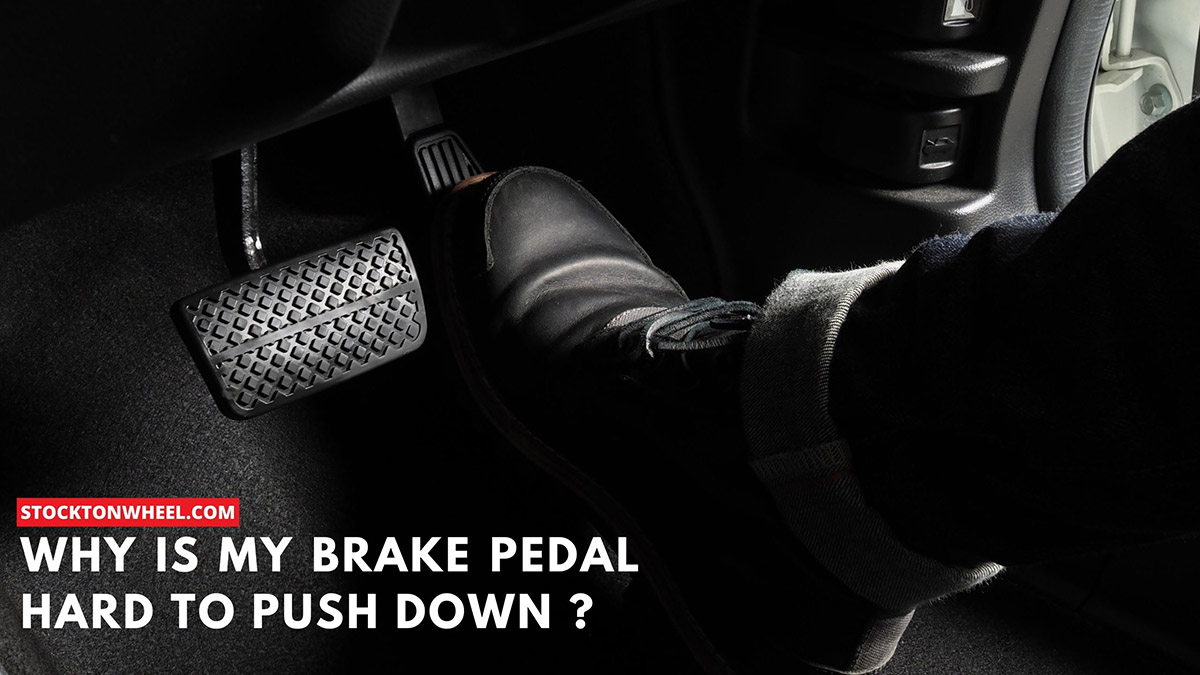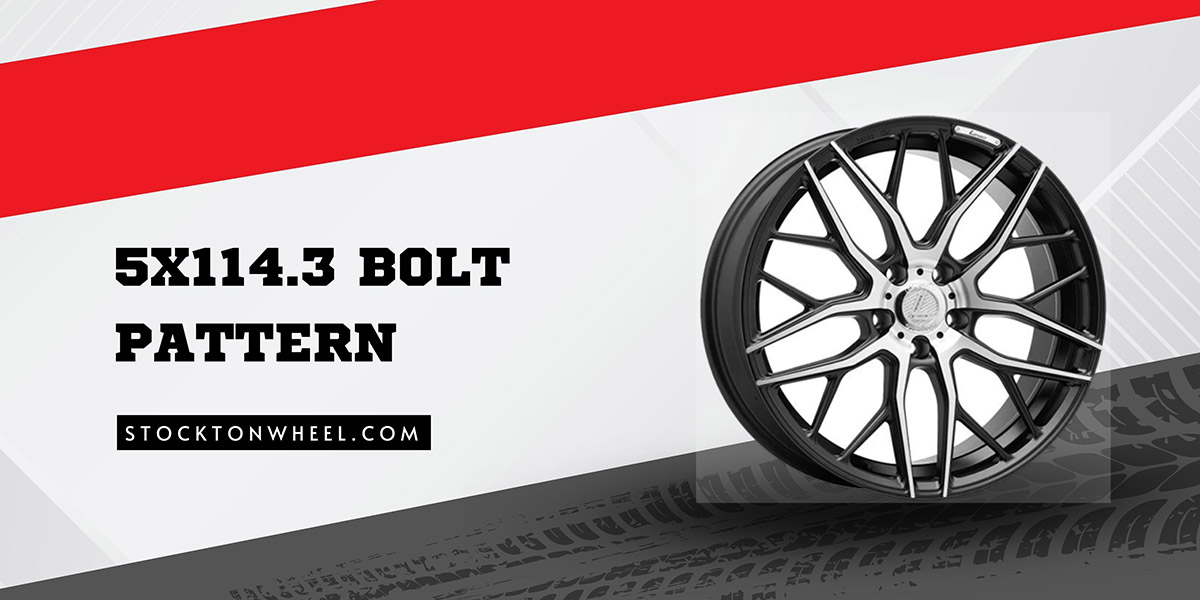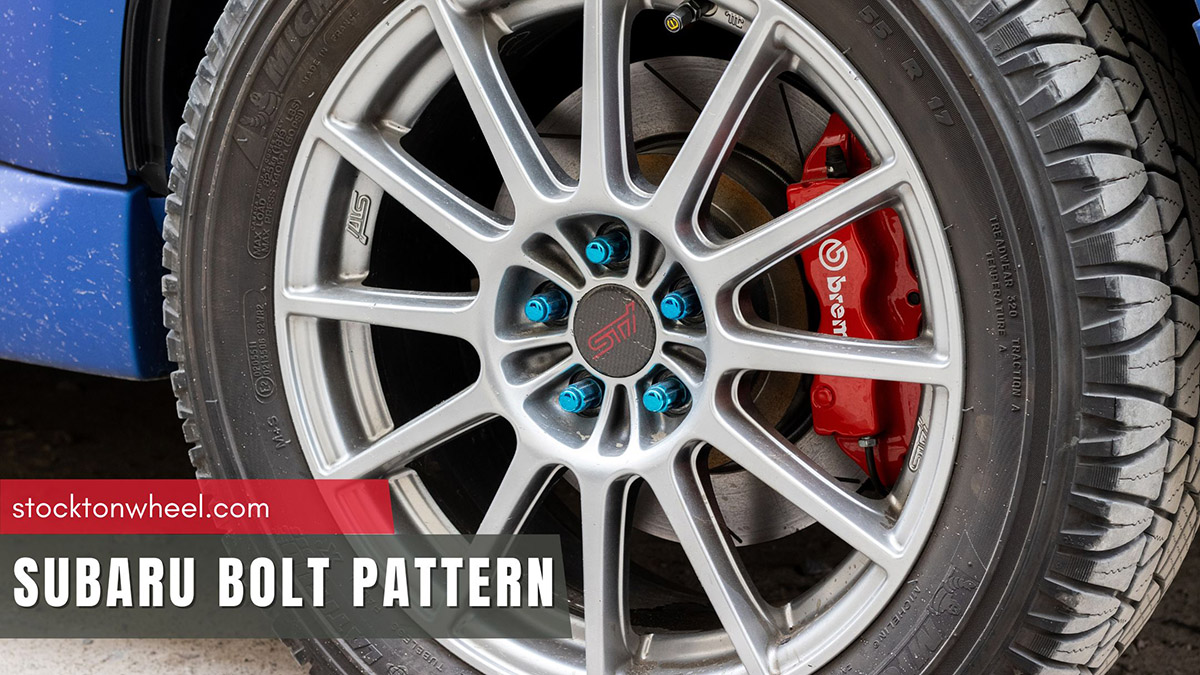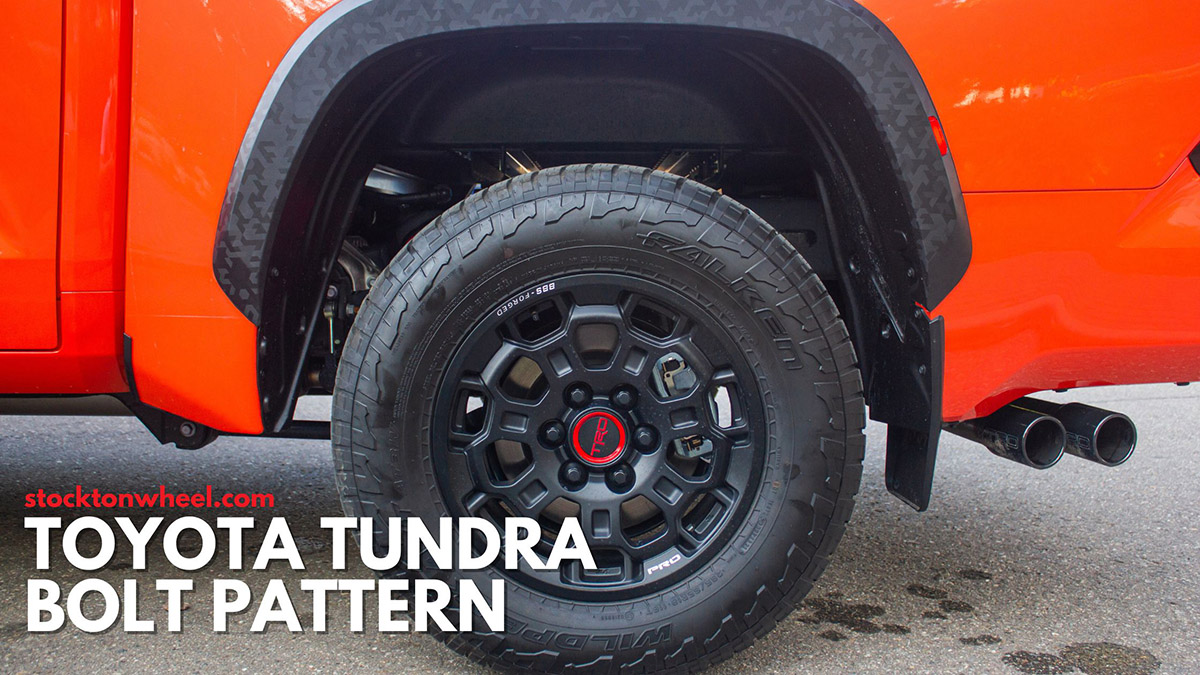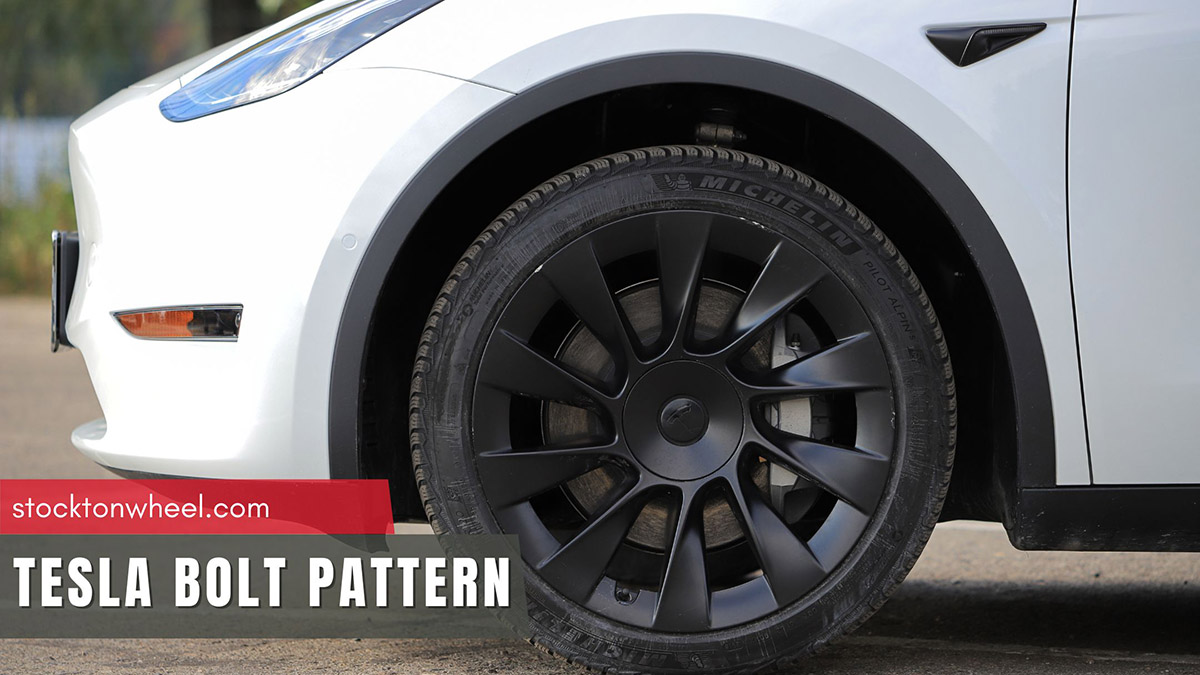Have you ever struggled with a brake pedal that feels unusually tough to press? It’s a situation that can cause safety worries. This comprehensive guide will delve into the common causes behind this issue.
A reliable brake system is crucial for your safety on the road, and we’re here to equip you with the knowledge and practical solutions to diagnose and resolve this problem promptly, ensuring your confidence during every drive.
In this article:
Why Is Your Brake Pedal Hard to Push Down?
A hard brake pedal can be caused by a variety of problems, including brake line blockage, caliper or wheel cylinder seizure, worn brake pads or shoes, low brake fluid, vacuum/air leak, or failure in components like brake booster, master cylinder, compressor, or electronic control unit (ECU).
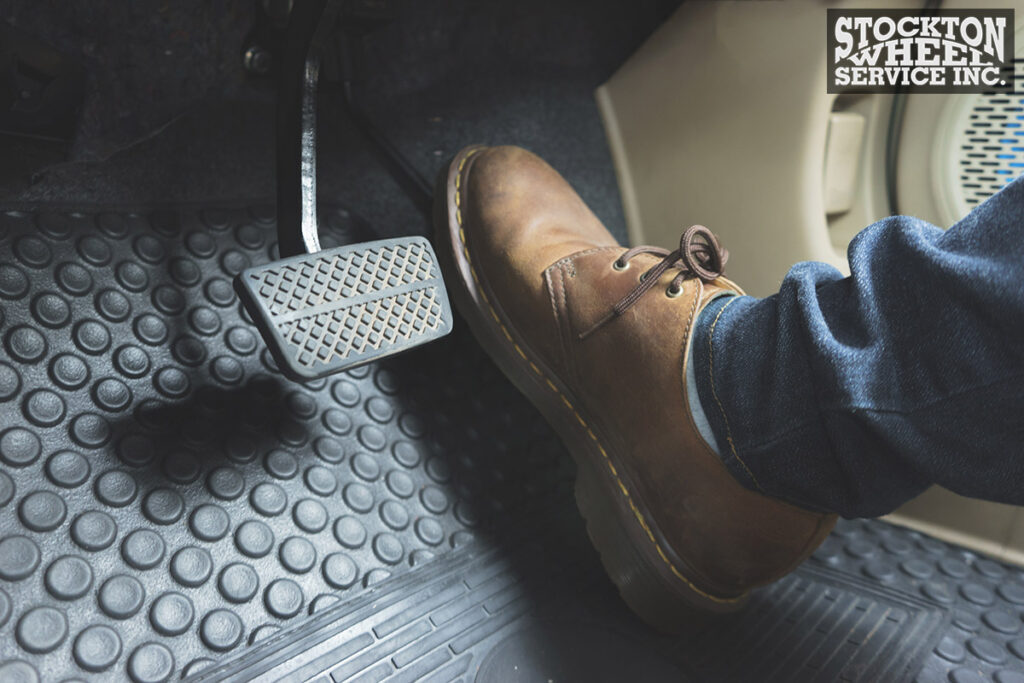
Brake Booster Failure
The brake booster relies on engine vacuum pressure to enhance the force applied to the brake pedal. If there’s a problem with the brake booster, the brake pedal can become significantly harder to depress.
How to diagnose a faulty brake booster
- Ensure the engine is off and the vehicle is stationary.
- Hit the brake pedal multiple times to deplete any vacuum stored in the brake booster.
- With your foot on the brake pedal, start the engine. If the pedal feels firmer when the engine starts, it suggests a functional brake booster.
- Start the engine.
- Firmly press and hold the brake pedal for about 30 seconds. The pedal should gradually sink while maintaining steady pressure. If it doesn’t, the brake booster may be faulty.
Master Cylinder Failure
The master cylinder is the heart of the brake system. It converts the force applied to the brake pedal into hydraulic pressure transmitted to the brake calipers and wheel cylinders. If the master cylinder fails, the brake pedal will be hard, and you may be unable to stop the vehicle.
How to diagnose a bad master cylinder
- Inspect the master cylinder for brake fluid leaks, corrosion, or physical damage.
- Check the brake fluid level in the reservoir. If it’s low, that’s an indicator of potential master cylinder issues. Top up the brake fluid to the recommended level.
Brake Line Blockage
In the braking system, there are lines that transfer hydraulic pressure from the master cylinder to the wheel cylinders (drum brakes) or calipers (disc brakes) on the wheels. If a brake line becomes blocked, the brake fluid cannot flow to its target components, and the brake pedal will be hard to push down.
How to diagnose a blocked brake line
- Examine the brake lines for any kinks, bends, or signs of damage that may obstruct the flow of brake fluid.
- If no visible blockages are found, consider bleeding the brake system to remove air bubbles, which can also cause a hard pedal.
Caliper or Wheel Cylinder Seizure
The calipers (for disc brakes) and wheel cylinders (for drum brakes) are the components that clamp down on the brake pads and shoes to stop the vehicle. If a caliper or wheel cylinder seizes, the brake pads or shoes will not be able to release properly, making it hard to press the pedal down.
How to diagnose a seized caliper or wheel cylinder
- Visually inspect the affected brake components for excessive brake dust, debris, brake fluid leaks, rust, or corrosion.
- Check for brake drag by attempting to rotate the wheel. It should move freely without resistance.
- Listen for scraping or scratching sounds as you rotate the wheel.
- After a short drive, check the wheel’s temperature. It may indicate a seized caliper or wheel cylinder if it’s significantly hotter than others.
Worn Brake Pads or Shoes
The brake pads (for disc brakes) or shoes (drum brakes) are the components that stop the vehicle by squeezing against the rotors or drums. As the brake pads and shoes wear down, it will be harder to apply the brake.
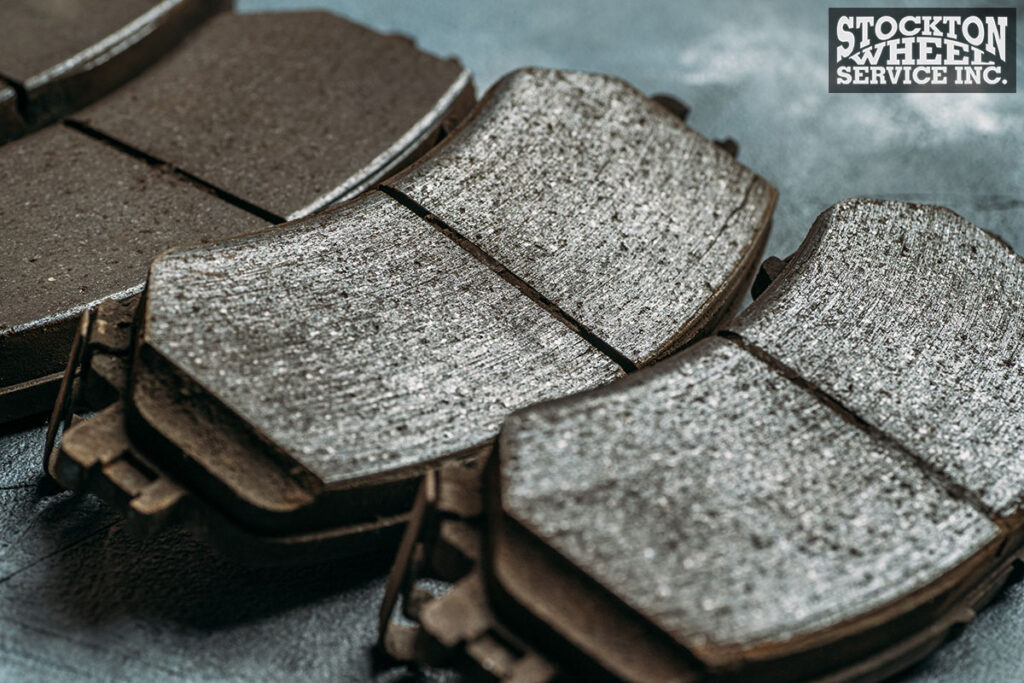
How to diagnose worn brake pads or shoes
- If the brake pedal feels stuck and you hear a grinding noise when you brake, it could be a sign of worn brake pads or shoes.
- Another symptom of this issue is when the brake pedal goes to the floor when you press it.
Low Brake Fluid
The brake fluid is the hydraulic fluid that transmits the force applied to the brake pedal to the brake calipers or wheel cylinders. If the fluid level is low, you will find it more challenging to push the pedal.
How to check your brake fluid level:
- Locate the brake fluid reservoir and check the fluid level. It should be between the “FULL” and “ADD” marks on the reservoir.
- If the fluid level is low, top it up to the appropriate level and observe if doing so improves the brake pedal’s feel. Suppose the pedal remains hard; other issues may be present.
Vacuum Leak
A vacuum leak can significantly impact your brake system’s performance. The inadequate vacuum pressure can impede the brake booster’s proper function, and the brake pedal becomes difficult to engage or feels spongy.
How to diagnose a vacuum leak
- Inspect the vacuum hoses and connections for cracks, disconnections, or visible damage. A broken check valve is likely the culprit behind the leak.
- Listen for hissing or air-escaping sounds near the vacuum components.
- Use a soap and water solution to check for bubbling or foaming, indicating an air leak in the connections or components.
Compressor Failure (Air Brake Systems Only)
The compressor is the component that compresses the air that is used to operate the brakes in an air brake system. If the compressor fails, the air pressure will not be able to build up sufficiently, and the brake pedal will be hard to push down.
How to diagnose a compressor failure
- Pay attention to hissing or unusual noises coming from the compressor.
- Use a pressure gauge to measure the air pressure output. If it falls below the manufacturer’s specifications, it may indicate compressor failure.
Electronic Control Unit (ECU) Failure (Electric Brake Systems Only)
The ECU system controls the electric brake system in your car. If the ECU fails, it can’t send the correct signal to the brake. At this point, the brakes may not work properly, evident in the hard-to-press pedal.
How to diagnose an ECU failure
- Use a diagnostic scan tool to check for error codes or issues related to the ECU.
- Inspect the ECU and its connections for any visible damage or loose connections.
Note: All the failures in the brake system should be checked and addressed at a professional repair shop for safety.
Tips to Prevent a Hard Brake Pedal
Here are some tips to prevent a hard brake pedal:
- Have your brakes inspected and serviced regularly by a qualified mechanic. This includes checking the brake pads/shoes, rotors/drums, calipers/wheel cylinders, brake lines, and fluid.
- Replace your brake pads or shoes when they are worn down. Brake pads or shoes should be replaced according to the manufacturer’s recommendations or sooner.
- Check your brake fluid level regularly and top it up if necessary. Brake fluid should be replaced every two years or sooner if contaminated.
- Avoid driving in harsh conditions, such as deep water or snow. If you must drive in extreme conditions, be sure to have your brakes inspected and serviced immediately afterward.
- Be gentle on your brakes. Steer clear from hard braking and sudden stops.
If you experience a hard brake pedal, do not drive your vehicle. Get it towed to a qualified mechanic as soon as possible.
FAQs
Is driving with a hard brake pedal safe?
No, driving with a hard brake pedal is unsafe because it reduces your vehicle’s ability to stop promptly in critical situations. A soft and responsive brake pedal is essential for quick and effective braking. A hard pedal can result from various issues within the brake system, and addressing it as soon as possible is crucial for your safety on the road.
Can Goop lead to a stiff brake pedal?
Yes, the presence of Goop or any foreign substance in your brake system can lead to a stiff brake pedal. Contaminants like Goop can interfere with the smooth operation of the brake components, causing resistance when you engage the pedal. Maintaining a clean and well-functioning brake system is vital to ensure your brakes respond as they should in all driving conditions.
Is it possible to clean a fuel tank without taking it out?
Cleaning a fuel tank without removing it is possible, but it’s not the recommended approach in most cases. When you clean a fuel tank without disassembling it, there’s a risk that you might not thoroughly remove all contaminants. This can lead to ongoing fuel system issues. To ensure proper and complete cleaning, removing the tank, cleaning it thoroughly, and inspecting it for any potential damage is generally better.
How do you change the brake booster?
To change the brake booster, a systematic process is required. Here’s an overview of how to replace the brake booster:
- Begin by disconnecting the brake booster vacuum hose and removing the master cylinder.
- Unbolt the old brake booster and remove it from its mounting.
- Install the new brake booster in its place and secure it with the appropriate bolts.
- Reconnect the master cylinder and the vacuum hose.
- Ensure the brake system is properly bled to remove any air and ensure optimal brake performance.
Conclusion
If you experience a brake pedal that is hard to push, it is important to address the issue promptly, as it can compromise your vehicle’s braking performance and safety. If you are unsure about the cause of this issue or how to fix it, it is always best to consult a qualified mechanic.

